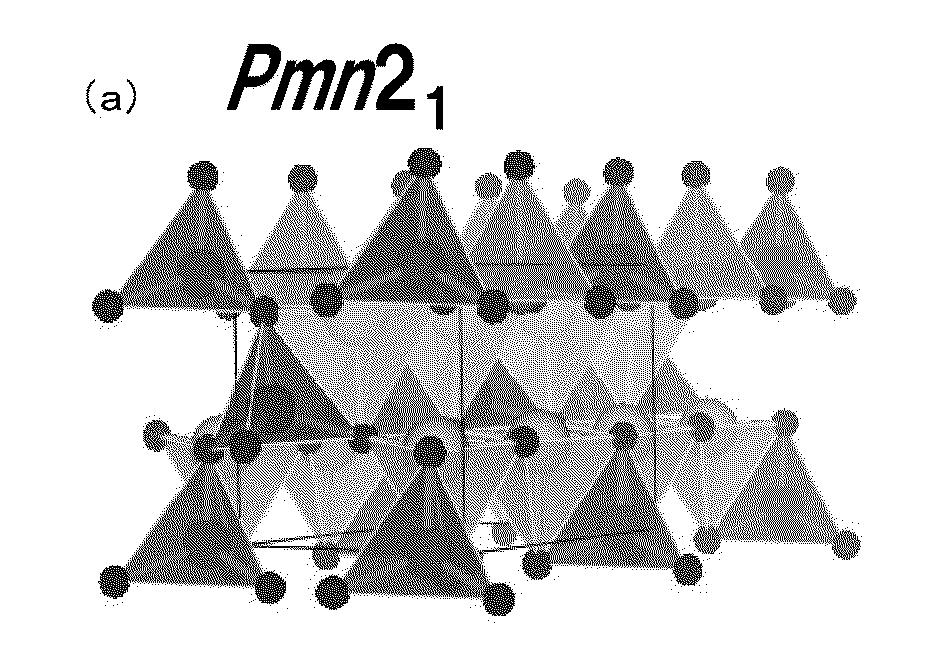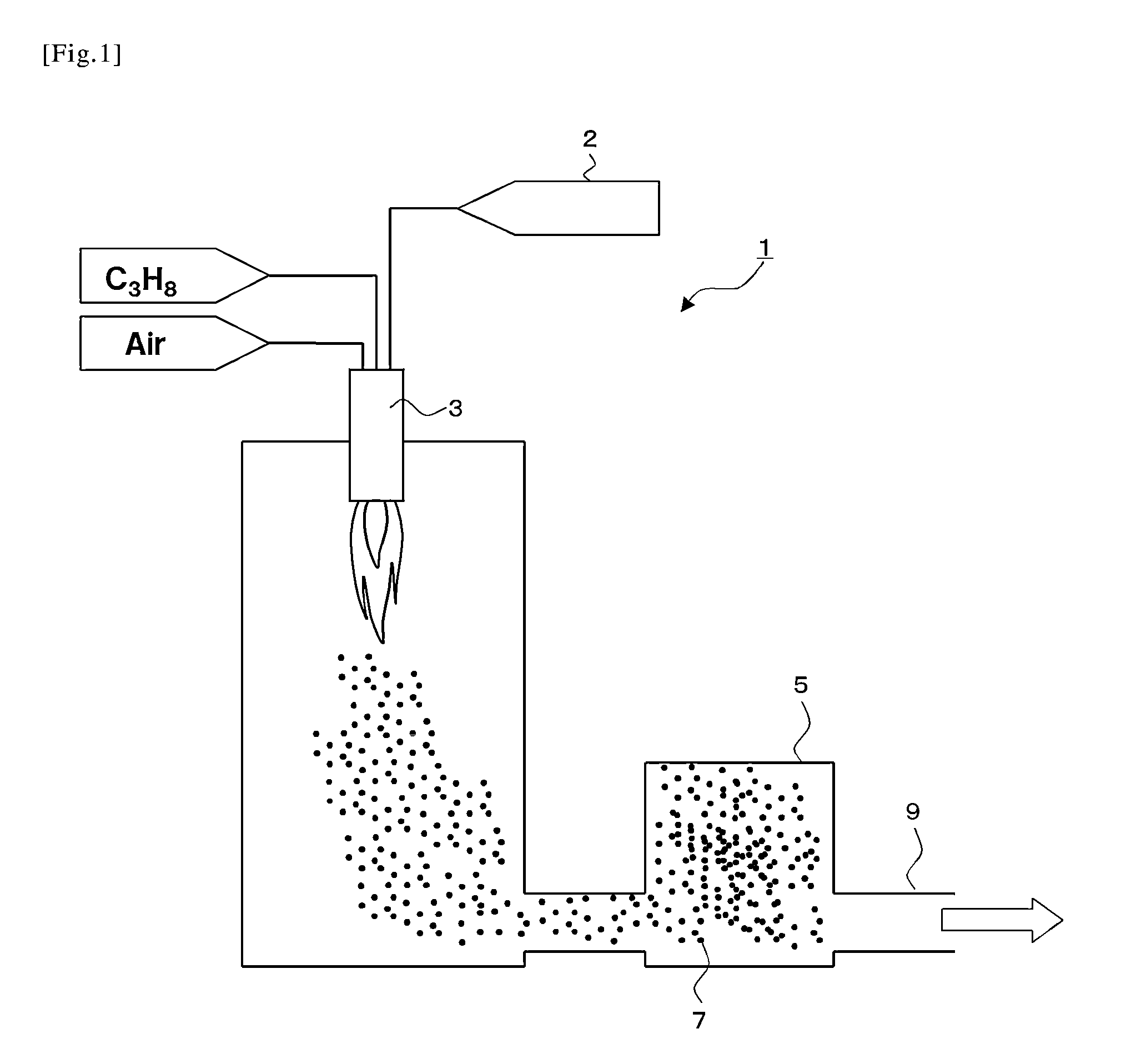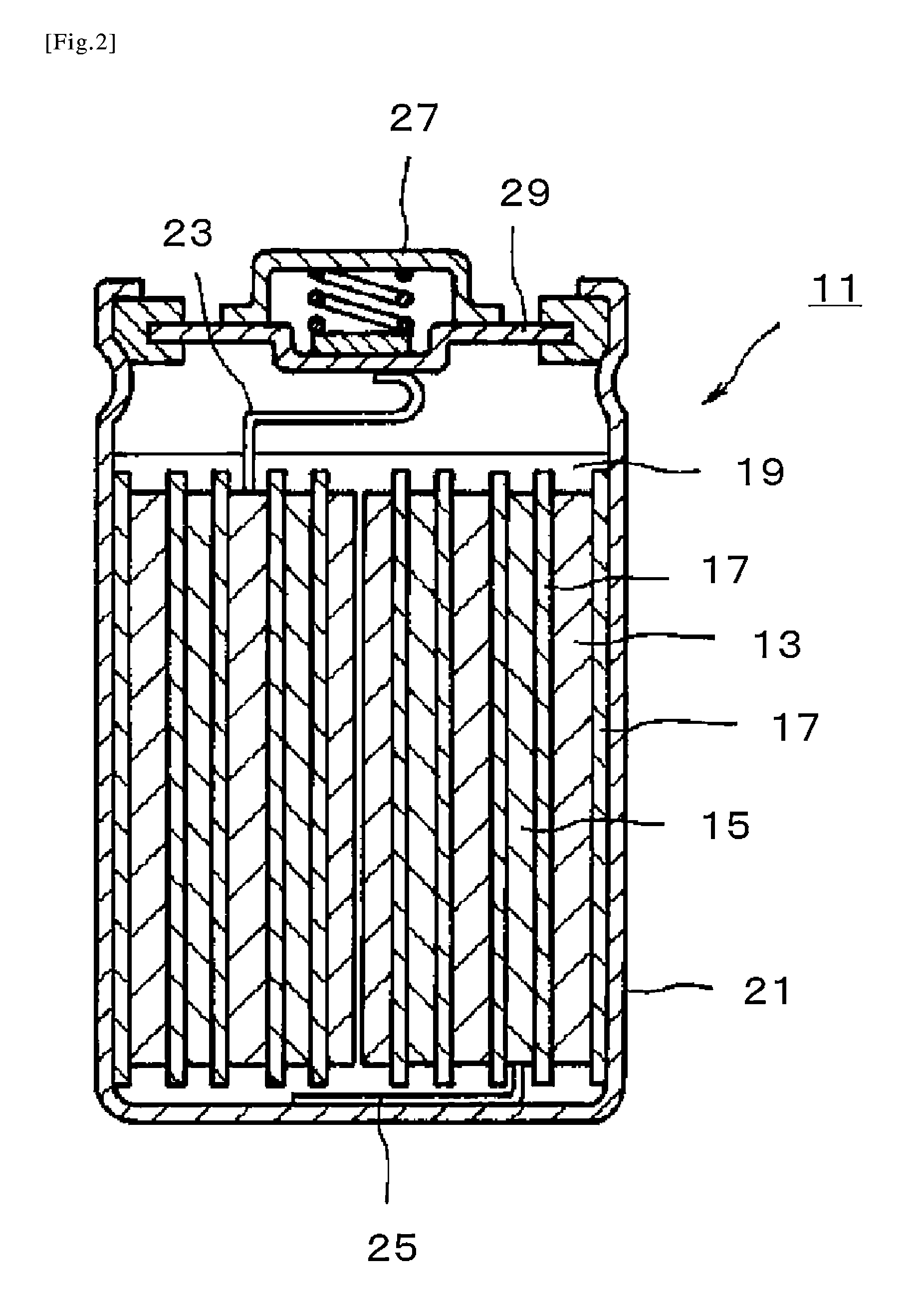Cathode active material, non-aqueous electrolyte secondary battery, and method for producing cathode active material
a technology of cathode active material and secondary battery, which is applied in the direction of silicates, conductors, cell components, etc., can solve the problems of inability to meet the required performance of portable power sources, inability to anticipate large improvement in power source capacity with current combination of cathode active materials and anode active materials, and inability to meet the requirements of high-functionality high-intensity electronic components. , to achieve the effect of improving discharge capacity and superi
- Summary
- Abstract
- Description
- Claims
- Application Information
AI Technical Summary
Benefits of technology
Problems solved by technology
Method used
Image
Examples
example 1
(1-1) Example 1
Preparation of the Particulate Mixture
[0077]A production apparatus for producing the particulate mixture by the spray-combustion method is shown in FIG. 1. In the reaction vessel in the apparatus of FIG. 1, particulate synthesis nozzles 3 are provided within the vessel, and propane gas (C3H8), air (Air), and the raw material solution 2 are supplied to the flame that is generated from the nozzle 3. On the other side is an exhaust pipe 9 for evacuating the particulates produced and the reaction product, and the particulate mixture 7 is collected by the particulate collection filter 5. The types of raw material supplied to the nozzle and their supply conditions were as follows. Further, the raw material solutions were supplied to the flame, using a binary fluid nozzle, so that the size of the droplet was 20 μm. The temperature of the flame was 2000° C.
[0078]Flammable Gas: propane (C3H8): 1 dm3 / min,
[0079]Combustion-Supporting Gas: air: 5 dm3 / min,
[0080]Lithium Source: lith...
PUM
| Property | Measurement | Unit |
|---|---|---|
| 2θ | aaaaa | aaaaa |
| size | aaaaa | aaaaa |
| particle size distribution | aaaaa | aaaaa |
Abstract
Description
Claims
Application Information
 Login to View More
Login to View More - R&D
- Intellectual Property
- Life Sciences
- Materials
- Tech Scout
- Unparalleled Data Quality
- Higher Quality Content
- 60% Fewer Hallucinations
Browse by: Latest US Patents, China's latest patents, Technical Efficacy Thesaurus, Application Domain, Technology Topic, Popular Technical Reports.
© 2025 PatSnap. All rights reserved.Legal|Privacy policy|Modern Slavery Act Transparency Statement|Sitemap|About US| Contact US: help@patsnap.com



